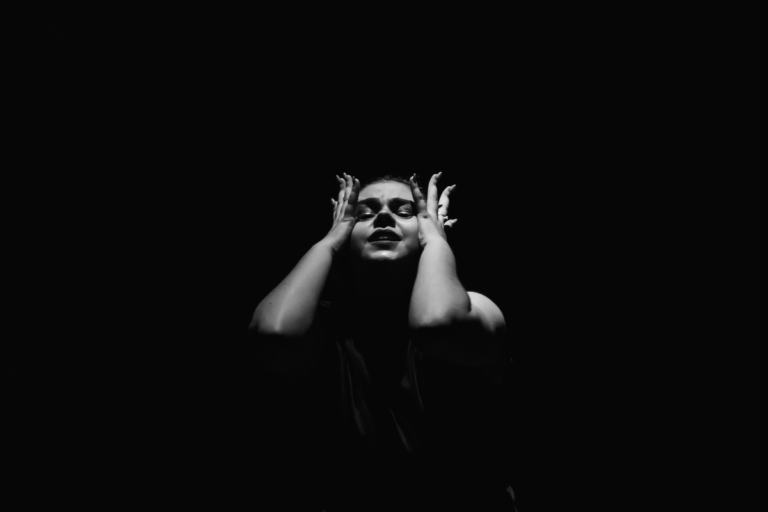Demystifying Obsessive-Compulsive Disorder (OCD): From Behavioral Patterns to Types

Stefanie Solomon

Obsessive-Compulsive Disorder (OCD) is more than just a preference for cleanliness or a desire for order. It’s a complex mental health condition that can significantly affect daily life, emotional well-being, and relationships. Despite growing awareness, many misconceptions still surround OCD—leading to delayed treatment and unnecessary stigma.
What Is OCD Behavior?
At its core, OCD involves two key elements: obsessions and compulsions. Obsessions are persistent, unwanted thoughts, urges, or images that cause distress or anxiety. Compulsions are the repetitive behaviors or mental acts performed to relieve that distress or prevent a feared event.
Unlike everyday worries or rituals, OCD behaviors are time-consuming and feel difficult—if not impossible—to control. They often interfere with school, work, relationships, and quality of life. According to the National Institute of Mental Health, approximately 1.2% of adults in the U.S. are affected by OCD each year, and symptoms can begin as early as childhood or adolescence.
These behaviors aren’t just quirks or personality traits. They’re attempts to cope with internal discomfort, often rooted in fear, shame, or an overwhelming need for certainty.

What Are the Four Types of OCD?
While every individual’s experience with OCD is unique, symptoms often fall into one or more of the following categories:
- Contamination and Cleaning OCD
This type involves intense fear of germs, illness, or feeling “unclean”. Individuals may wash their hands excessively, avoid touching doorknobs or public surfaces, or spend hours sanitizing their environment. Emotional discomfort—not dirt itself—is usually the driving force behind the behavior. - Symmetry, Ordering, and “Just-Right” OCD
A strong need for balance, symmetry, or precision characterizes this subtype. Actions might include arranging items in a specific order, repeating movements until they “feel right,” or mentally reviewing tasks to achieve a sense of completion. Discomfort arises when things feel even slightly off. - Checking and Harm OCD
People with this type experience persistent doubts and fears about causing harm to themselves or others—often unintentionally. As a result, they may repeatedly check stoves, doors, appliances, or even mentally review past actions to ensure they didn’t make a mistake. The checking can go on for hours and lead to extreme distress. - Intrusive Thoughts and Mental Rituals
This less visible form involves distressing intrusive thoughts, often violent, sexual, or religious in nature. To manage the anxiety these thoughts cause, individuals may engage in silent rituals—such as repeating specific phrases, counting, or mentally praying. Because these rituals are internal, this type of OCD can go unnoticed and is often referred to as “Pure O.”
It’s important to note that many people with OCD experience symptoms across multiple categories or outside these four general types.
On the other hand, people with healthier self-esteem tend to cope better with stress, bounce back more easily from setbacks, and form stronger, more fulfilling connections. That doesn’t mean they never struggle—but they’re more likely to feel grounded and supported through those challenges.
What Are the Habits of OCD?
OCD habits are not the same as routines or preferences. They are repetitive actions performed in response to anxiety triggered by obsessive thoughts. Some common patterns include:
- Excessive hand-washing or cleaning
- Rechecking locks, appliances, or emails
- Arranging items until they feel “just right”
- Repeating words, prayers, or numbers silently
- Avoiding certain situations or people to reduce anxiety
These habits may seem irrational to outsiders but serve as coping mechanisms for individuals with OCD. Unfortunately, they often reinforce the very anxiety they aim to reduce.
Research indicates that 90% of people with OCD also experience at least one additional mental health condition—most commonly depression, generalized anxiety, or social anxiety. These overlapping symptoms can make it harder to recognize OCD, especially in its early stages.
What Does an OCD Episode Look Like?

OCD episodes often follow a predictable cycle:
- Trigger – A thought, image, or situation sparks anxiety or discomfort.
- Obsession – Intrusive thoughts begin to loop, creating rising tension or fear.
- Compulsion – An action (external or internal) is performed to neutralize the feeling.
- Temporary Relief – The compulsion reduces anxiety momentarily.
- Reinforcement – The brain learns that performing the compulsion reduces distress, which reinforces the behavior over time.
For example, someone might leave their home and feel the sudden fear that they left the stove on. Despite checking multiple times, the thought returns, accompanied by panic. They might turn back home to check once more—even if they’re already running late for an appointment.
Episodes can range from a few minutes to several hours and can happen multiple times a day. In more severe cases, they can disrupt education, work, and relationships, leading to social withdrawal or burnout.
Support and Treatment Options
OCD is treatable—even in its most severe forms. The most effective, research-backed treatments include:
- Cognitive Behavioral Therapy (CBT), particularly Exposure and Response Prevention (ERP)
- Medication, such as SSRIs (selective serotonin reuptake inhibitors)
- Psychoeducation and self-help strategies to build awareness
- Support groups or peer communities, both in-person and online
Early intervention can significantly reduce the long-term impact of OCD. Even when symptoms feel overwhelming, help is available, and recovery is possible.
Final Thoughts
OCD is not a personality quirk or a preference for order. It’s a deeply misunderstood mental health condition that often goes unnoticed or misinterpreted. By better understanding OCD behavior, its different forms, and what real-life episodes can look like, we can foster empathy and reduce stigma.
If you or someone you know is struggling, reaching out for support is not a weakness—it’s an important first step toward healing.
Responsibly edited by AI
Other Blog Posts in
Animo Sano Psychiatry is open for patients in North Carolina, Georgia and Tennessee. If you’d like to schedule an appointment, please contact us.
Get Access to Behavioral Health Care
Let’s take your first step towards. Press the button to get started. We’ll be back to you as soon as possible.ecovery, together.




